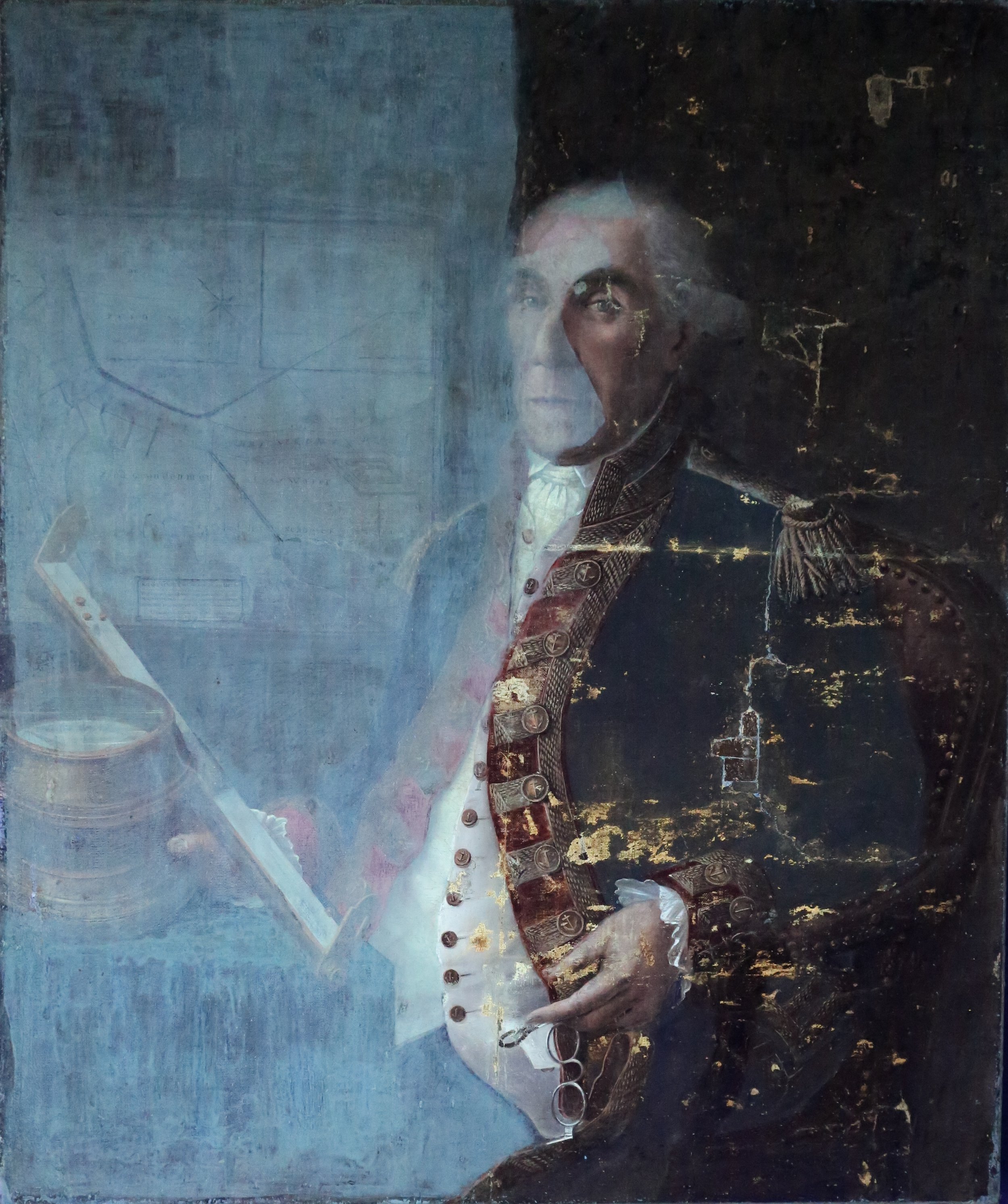Leendert den Berger c.1800 by H Kuyk
-
This painting was part of a large private collection of European 17th c. to 19th c. paintings willed to the current owner by a passing relative. This particular painting was thought to have been painted by a prominent 18th c. artist living between the Colonies and England, neither of which turned out to be the case. We did however know the name of the sitter – Leendert den Berger (1751 – 1802), who in 1875 designed the dike systems for Amsterdam. We found that he lived on the isle of Texel near Den Berg. His house is named “Huize Brakenstein en Wezenputten, and is still standing today. The original map in this painting has survived and is part of the archival collection of the Library at Delft University of Technology, in Delft, Netherlands.
The artist however, did not turn out to be a renowned person as is usually the case, but we did discover the real artist’s signature on the back of the original painting once we removed the deteriorating lining canvas. In a flourishing script applied with a quill pen was scribed – “H. Kuyk, pinxit anno 98.” Pinxit is latin for painted by, and anno is latin for year. We have looked online, but we have not found anything about this artist.
Condition Report
Image - Before treatment
The painting is executed in a pigment rich oil medium over a white preparatory ground layer on a coarsely woven linen canvas. It was stretched over an old 5-member pine stretcher with butt-ended mortise and tenon joinery that was not original to the painting. The painting had been previously cleaned several times, and multiple complex tears were mended as well. With over 6 feet of tears, that likely didn’t happen at the same time, we realized that it had been restored and maybe relined several times. Most of the tears were misaligned when mended, and were heavily overpainted. The animal glue adhesive used to attach the current lining canvas had become desiccated and was failing. It was also delaminating in isolated areas throughout the composition. During our initial assessment, it is not possible to fully know the condition of the painting without removing all of the overpaint. We did conclude that the remaining paint was very stable, well executed, brightly painted, and highly detailed.
Ultra Violet Photography
Image - Half cleaned under Ultra violet light.
When viewed under ultra violet illumination, the varnish fluoresced the characteristic yellow/green color of a natural resin, tree sap-based coating. Very little of the overpaint was visible at this point and after the fact, led us to believe that an additive to the varnish (or overpaint) has been added to purposefully block ultraviolet light detection of previous restoration/overpainting. Upon close examination with visible light and magnification, the extent of previous restoration is however quite evident. We found that over half of the painting had been completely overpaint, which included the background, Leendert’s red coat, his face, trousers, and the green tablecloth.
Treatment
Image - Half cleaned
Once permission was given to begin treatment, we conducted a series of cleaning tests and developed a workable progression from organic to aqueous-based cleaning solutions that safely removed the heavily discolored varnish coating layers, overpaint, embedded dirt and nicotine in the surface of the paint. Thankfully very little of the intricate lettering on the map had been damaged through the years, and was fairly intact.
Half cleaned under UV light.
Fully cleaned.
Infrared Photography
Image - Infrared imagery of signature
The painting was then removed from its stretcher and the back of the original canvas revealed the artist’s signature. We were able to gently scrape the remnants of glue adhesive from the canvas with a surgical scalpel and removed the adhesive that was covering the signature with a solvent that ensured the historic lettering was not affected. With the use of a computer-generated photography program, we were able to enhance an infrared image of the signature allowing us to read much of the inscription not visible when using standard illumination.
Fills & Inpainting
All complex tears throughout the painting were realigned and mended before the painting was infused and lined. The painting was mounted onto a piece of clear acrylic sheeting so the signature could be visible while fully supporting and keeping flat all of the repaired tears. Losses were filled and many hours of fine delicate inpainting were needed to bring this important historical portrait back to its once vibrant glory. The client chose to have the painting reframed in a larger, grander frame that was more period appropriate than the previous frame.






